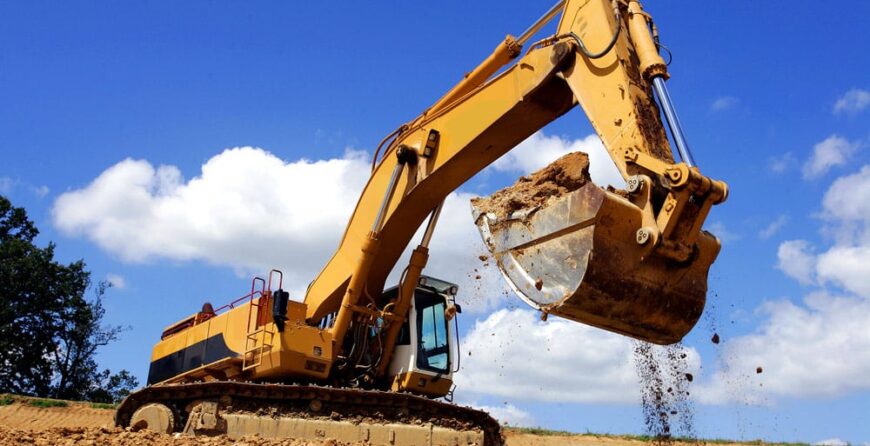Introduction to Earth Moving Equipment
When it comes to construction and excavation, the right tools can make all the difference. Earth moving equipment stands at the forefront of this industry, transforming how we approach heavy lifting and land preparation. From sprawling commercial sites to residential projects, these machines play a pivotal role in shaping our environments.
Imagine clearing vast areas of land with precision or digging deep foundations in no time—this is where earth moving equipment shines. With advancements in technology and a variety of options available, understanding what these machines offer is essential for anyone involved in construction or excavation. Let’s delve into the world of earth moving equipment and explore its significance in today’s building landscape.
Types of Earth Moving Equipment
Earth moving equipment comes in various shapes and sizes, each designed for specific tasks. Excavators are among the most versatile tools, perfect for digging trenches or lifting heavy materials. Their long arm allows them to work efficiently in tight spaces.
Bulldozers are powerful machines known for their ability to push large quantities of earth or debris. Equipped with a wide blade, they clear sites quickly and effectively.
Loaders provide another essential function by scooping up materials such as soil, gravel, or sand. They can transport these loads across construction sites with ease.
Dump trucks play a vital role too; they transport excavated material away from the site when necessary. Their design ensures easy unloading of cargo at designated areas.
Graders help create smooth surfaces by leveling out uneven ground. Each type of earth moving equipment contributes uniquely to project efficiency and productivity on construction sites.
Benefits of Using Earth Moving Equipment in Construction and Excavation Projects
Using earth moving equipment in construction and excavation projects brings numerous advantages that enhance efficiency. These machines save time by speeding up the movement of large volumes of materials, allowing for quicker project completion.
Labor costs also decrease significantly when heavy machinery takes on tasks previously done manually. This shift not only optimizes resources but reduces fatigue among workers, leading to safer working environments.
Precision is another crucial benefit. Earth moving equipment can achieve specific grades and depths with accuracy that manual labor simply cannot match. This level of detail minimizes rework, ensuring projects meet design specifications without costly delays.
Moreover, advanced technology integrated into modern equipment provides features like GPS tracking and automation. These innovations improve productivity while minimizing human error during operation, making every phase smoother and more reliable in construction sites or excavations.
Top 5 Must-Have Earth Moving Equipment for Efficient Project Completion
When it comes to efficient project completion, certain earth moving equipment stands out.
Excavators lead the pack. They are crucial for digging deep trenches and lifting heavy materials. Their versatility makes them indispensable on any construction site.
Next up is the bulldozer. Known for its robust blade, a bulldozer excels in clearing debris and leveling surfaces. Its power can handle tough terrains with ease.
Don’t overlook backhoes either. These machines combine an excavator’s arm with a loader’s bucket, making them perfect for various tasks—from trenching to material handling.
Skid steers also deserve mention due to their compact size and agility. Ideal for smaller spaces, they perform multiple functions when fitted with different attachments.
Consider dump trucks as essential companions on-site. They efficiently transport large volumes of soil or aggregate, streamlining workflow significantly without delays.
Latest Technological Advancements in Earth Moving Equipment
Recent advancements in earth moving equipment have transformed the construction landscape. One of the most significant innovations is the integration of GPS technology. This allows operators to achieve precise grading and excavation, reducing material waste and increasing efficiency.
Another exciting development is the rise of electric-powered machinery. These eco-friendly options are quieter and produce fewer emissions, making them ideal for urban projects where noise restrictions apply.
Automation has also made strides, with remote-controlled machines capable of operating in hazardous environments. This enhances safety for workers while maintaining productivity on site.
Smart sensors are becoming standard features as well. They monitor machine performance in real-time, alerting operators to potential issues before they escalate into costly repairs or delays.
These technological improvements not only enhance operational efficiency but also pave the way for more sustainable practices within the industry.
Safety Measures and Training for Operating Earth Moving Equipment
Operating earth moving equipment demands a keen focus on safety. Before stepping into the cabin, operators must undergo thorough training that covers both machinery operation and site protocols.
Proper training programs impart essential knowledge about the specific machine’s capabilities and limitations. Operators should also learn to identify potential hazards in their work environment.
Regular maintenance checks are crucial for ensuring equipment is in optimal condition. Knowing how to spot mechanical issues can prevent accidents before they occur.
Additionally, it’s vital for operators to wear appropriate safety gear at all times. Helmets, gloves, and eye protection safeguard against unforeseen dangers on site.
Fostering a culture of communication among team members enhances overall safety. Regular briefings allow everyone to stay informed about ongoing operations and any new risks that may arise during excavation or construction activities.
Conclusion: The Future of Construction and Excavation with Earth Moving Equipment
The landscape of construction and excavation is evolving rapidly, thanks to advancements in earth moving equipment. These machines are not just tools; they represent a shift towards efficiency, sustainability, and safety in the industry.
As technology continues to advance, we can expect even more innovative solutions that improve performance and reduce environmental impact. Electric models are emerging, reducing emissions and operating costs while enhancing job site productivity. Automation will play an increasing role as well. With remote-controlled or fully autonomous earth moving equipment on the horizon, project timelines could shrink significantly.
Additionally, training programs for operators are becoming more sophisticated. With virtual reality (VR) training modules now available, workers can practice their skills safely before stepping onto a real job site.
The future holds exciting possibilities for those who embrace these changes. Earth moving equipment will continue to transform construction methods while paving the way for smarter building practices globally. As industries adapt and evolve alongside this technology, both productivity and safety standards promise to rise dramatically.


